
Selasa, 31 Mei 2011
Samsung Galaxy S II, fastest selling smartphone in Korea
30 May, 2011 | Comments (30) | Post your comment
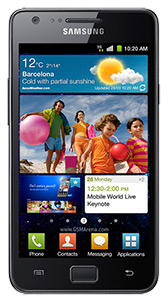 The Samsung Galaxy S II has already been blazing a trail in its homeland of South Korea, but its just passed another impressive landmark. It had already surpassed all previous pre-orders for Samsung in Korea and had doubled that of the iPhone 4.
The Samsung Galaxy S II has already been blazing a trail in its homeland of South Korea, but its just passed another impressive landmark. It had already surpassed all previous pre-orders for Samsung in Korea and had doubled that of the iPhone 4.Now, in its first month alone its sold over 1 million units which makes it the fastest selling smartphone ever in Korea. It's predecessor the Galaxy S took a full 70 days to hit that magic number and the S II promised great things early on when it passed 100,000 units by day three, doubled that by day eight and hit half a million in two weeks.
Part of the S II's one-upmanship over iPhone 4 came about as the Galaxy S II didn't suffer carrier support problems. KT were originally the only carrier for the iPhone until this month when SK picked it up as well. Despite this, it's still a great success for Samsung and one they no doubt hope to reproduce elsewhere with their S II family in the US and the S II's availability across Europe.
BlackBerry Curve 9370 a.k.a. Apollo poses for a photo shoot
BlackBerry has some hard time keeping its still unannounced phones private. The BlackBerry Curve 9370, previously known as Apollo, leaks today in series of shots and a lengthy demo video.
The Curve 9370 a.k.a. Apollo has leaked twice before - via a BlackBerry OS7 ROM and later with an press-quality picture and specifications.
Today the guys over Tinhte.vn brought us another surprise - lots of excellent live shots of the BlackBerry Curve 9370. See for yourself:

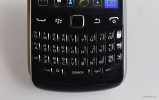
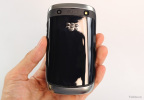
BlackBerry Curve 9370
But that's not everything they've got in the bag for us. You can enjoy quite a thorough video demonstrating both the hardware and software side of things.
What we know so far is the Curve 9370 will pack an 800MHz processor, a HVGA screen, 512MB RAM, 5 megapixel camera with LED flash and a complete connectivity package with Wi-Fi N and NFC. It runs on BlackBerry OS7.
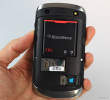
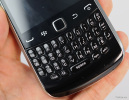
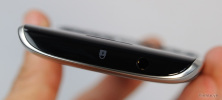
BlackBerry Curve 9370
We guess the official announcement should happen soon. According to the source, the Curve 9370 is scheduled for an August release.
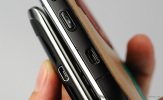
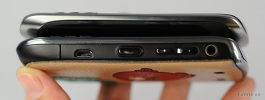
The Curve 9370 a.k.a. Apollo has leaked twice before - via a BlackBerry OS7 ROM and later with an press-quality picture and specifications.
Today the guys over Tinhte.vn brought us another surprise - lots of excellent live shots of the BlackBerry Curve 9370. See for yourself:



BlackBerry Curve 9370
But that's not everything they've got in the bag for us. You can enjoy quite a thorough video demonstrating both the hardware and software side of things.
What we know so far is the Curve 9370 will pack an 800MHz processor, a HVGA screen, 512MB RAM, 5 megapixel camera with LED flash and a complete connectivity package with Wi-Fi N and NFC. It runs on BlackBerry OS7.



BlackBerry Curve 9370
We guess the official announcement should happen soon. According to the source, the Curve 9370 is scheduled for an August release.


Symbian Anna running Nokia E6 and X7 now shipping, slowly
The first Symbian Anna phones, the Nokia E6 and the Nokia X7, are now shipping. Announced back in April, these two have been on pre-order for a while and now you can buy one, if you don’t mind a stretched out delivery date.
The touchscreen/QWERTY E-series messenger, the Nokia E6, will be available in Europe, Eurasia, Asia/Pacific, the Middle East and Africa. Nokia Germany’s online store still have it on pre-order for €429 while Italians can pre-order it for €399. The Nokia UK online store still lists it as available on pre-order for £349 (€400) SIM-free.
It is shipping now if you want to get it on a contract (phone is free with a £25/month contract with Vodafone or T-Mobile) or on pre-paid for £339 with Vodafone, T-Mobile or Orange. There’s a note saying you should allow 11 days for delivery.
The Nokia X7 and its 4” AMOLED screen will be headed to Europe, Eurasia, China, India and other Asia/Pacific countries. Its pre-order price in Germany (according to Nokia’s online store) is €459 and €429 in Italy, which is quite steep despite all of Symbian Anna’s improvements. It’s missing from the UK store right now.
We’re expecting Nokia’s online stores to switch the Nokia E6 and X7 status to “available” soon
The touchscreen/QWERTY E-series messenger, the Nokia E6, will be available in Europe, Eurasia, Asia/Pacific, the Middle East and Africa. Nokia Germany’s online store still have it on pre-order for €429 while Italians can pre-order it for €399. The Nokia UK online store still lists it as available on pre-order for £349 (€400) SIM-free.
It is shipping now if you want to get it on a contract (phone is free with a £25/month contract with Vodafone or T-Mobile) or on pre-paid for £339 with Vodafone, T-Mobile or Orange. There’s a note saying you should allow 11 days for delivery.
The Nokia X7 and its 4” AMOLED screen will be headed to Europe, Eurasia, China, India and other Asia/Pacific countries. Its pre-order price in Germany (according to Nokia’s online store) is €459 and €429 in Italy, which is quite steep despite all of Symbian Anna’s improvements. It’s missing from the UK store right now.
We’re expecting Nokia’s online stores to switch the Nokia E6 and X7 status to “available” soon
Samsung I9000 Galaxy S Unlocked GSM Smart Phone
The Samsung touch screen of Galaxy S is incredibly great. It has real bright and striking colors. And if you’re looking for the perfect size, Galaxy S just has it. It’s very thin and has a very light weight. It has a fashionable and quick interface as well. It stops every now and then but it happens a few times and last for 10 seconds only. Nothing to worry about. Battery drains out fast so you need to charge it every day especially if you use the Galaxy often for navigating the internet or if you watch videos all day. Camera has no flash but takes good pictures. One great thing I love about the Galaxy S is it keeps you connected when making calls whenever I pass by a dead zone and the calls are very clear as well.
Galaxy S is not all that perfect. It has its imperfections as well like the buttons which sometimes don’t respond pretty well. It comes with too much apps which some of them are not really needed. The GPS can become weird sometimes but it is easier to use if you connect it first to Google navigation.
Overall, this Samsung touch screen smartphone is a great phone indeed that I can recommend to anyone who is into Android.
Samsung GT-i5800 Galaxy 3 Unlocked GSM Smartphone
Looking into this Samsung touch screen Galaxy 3 made a great purchase for me. The price is really cheap considering all the features this Android smartphone has. The touch screen and its smart design are really great. The Android OS is incredible. The battery of this smartphone really amazes me. It can last for 2 – 3 days with heavy use.
On the downside, the camera has no flash though it provides excellent pictures. The WiFi does not work well with Android 2.1 but after replacing it with Android 2.2 it went running smoothly. Viewing large images in the gallery is slow.
In summary, if you’re looking for an Android smartphone that is not costly, I recommend the Samsung touch screen Galaxy 3 Smartphone a great phone with a great price.
On the downside, the camera has no flash though it provides excellent pictures. The WiFi does not work well with Android 2.1 but after replacing it with Android 2.2 it went running smoothly. Viewing large images in the gallery is slow.
In summary, if you’re looking for an Android smartphone that is not costly, I recommend the Samsung touch screen Galaxy 3 Smartphone a great phone with a great price.
Computer Name Resolution
Remembering IPv4 addresses can be cumbersome, especially when there are many machines on many networks. One way we sort out this complexity is with the use of the Domain Name System (DNS). When one computer connects to another computer using its domain name, the DNS translates the computer’s domain name into its appropriate IP address.
The DNS will first access a network-based file called the hosts file. The hosts file is a listing of corresponding IPv4 addresses and host names. By default, there is only one IP address—the localhost address; it is equivalent to the loopback address 127.0.0.1. The hosts file can always be modified to accommodate additional IP addresses.
If it has not found the IP address in the hosts file, the computer will need to query the DNS cache (on Windows machines) and then the DNS server for the IP address. The DNS cache is a local copy of recently used name–IP address pairs. If the name is not in the cache, then the request is directed to a DNS server. If the DNS server does not have the IP address in its database, it can “ask” another DNS server for the information. DNS servers are organized in a hierarchical structure, ultimately ending at servers maintained by the naming authorities. This is an efficient method of resolving IP addresses to names.
The fully qualified domain name (FQDN) is a dot-separated name that can be used to identify a host on a network. The FQDN consists of the host name along with its domain name and any other subdomain names, such as www.somename.com.
In this lab, you will modify the hosts file, test connectivity using the FQDN, and then explore the functionality of the nslookup command
The DNS will first access a network-based file called the hosts file. The hosts file is a listing of corresponding IPv4 addresses and host names. By default, there is only one IP address—the localhost address; it is equivalent to the loopback address 127.0.0.1. The hosts file can always be modified to accommodate additional IP addresses.
If it has not found the IP address in the hosts file, the computer will need to query the DNS cache (on Windows machines) and then the DNS server for the IP address. The DNS cache is a local copy of recently used name–IP address pairs. If the name is not in the cache, then the request is directed to a DNS server. If the DNS server does not have the IP address in its database, it can “ask” another DNS server for the information. DNS servers are organized in a hierarchical structure, ultimately ending at servers maintained by the naming authorities. This is an efficient method of resolving IP addresses to names.
The fully qualified domain name (FQDN) is a dot-separated name that can be used to identify a host on a network. The FQDN consists of the host name along with its domain name and any other subdomain names, such as www.somename.com.
In this lab, you will modify the hosts file, test connectivity using the FQDN, and then explore the functionality of the nslookup command






